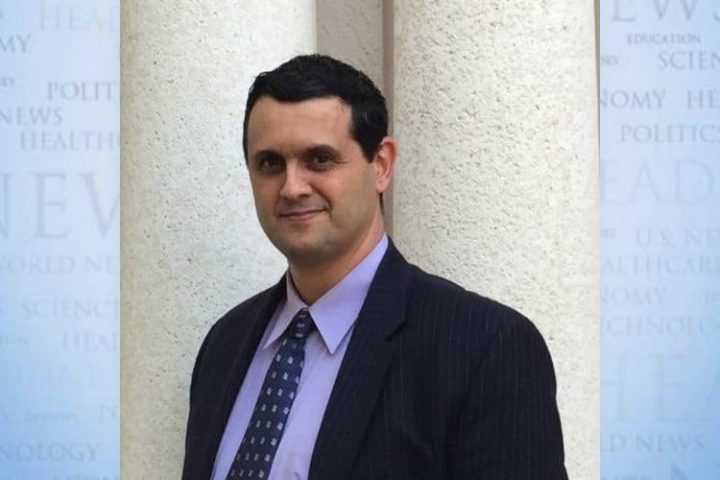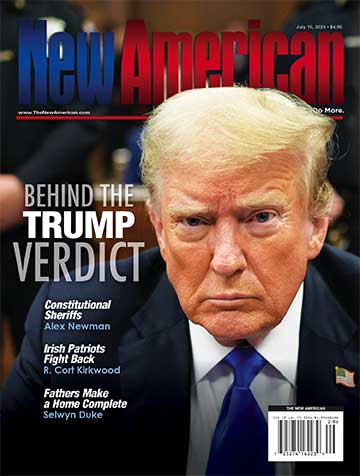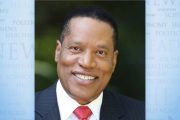
On November 3, the U.S. Supreme Court will hear arguments in the case of New York State Rifle & Pistol Association, Inc. (NYSRPA) v. Bruen, the first major Second Amendment case considered by the high court in quite some time. Some have incorrectly argued that a ruling in the petitioners’ favor will “gut” the nation’s gun laws. To the contrary, such a ruling would only solidify the meaning and intent of the Second Amendment and would serve to stop the Democrats’ efforts to dissolve/eliminate the Second Amendment by virtue of dangerous policies that punish law-abiding citizens and put them most at risk.
In New York State Rifle & Pistol Association, Inc. (NYSRPA) v. Bruen, the New York State Rifle & Pistol Association challenged a New York law prohibiting citizens from carrying a gun outside their home without a license. To obtain such a license, a citizen first had to convince the state that he or she had “proper cause” to carry a firearm. The term “proper cause” is not specifically defined. However, various New York courts have ruled that an applicant seeking a license to carry a handgun for self-defense must “demonstrate a special need for self-protection distinguishable from that of the general community or of persons engaged in the same profession.”
The petitioners’ applications for concealed-carry licenses were denied. As a matter of fact, one of the petitioners had completed an advanced firearm(s) training course and referenced a string of robberies in his neighborhood but was denied a concealed-carry license because his risk was no different from those in the general community.
In District of Columbia v. Heller, the Supreme Court ruled that the Second Amendment protects “the individual right to possess and carry weapons in case of confrontation.” The Supreme Court subsequently ruled that this right fully applies to the various states. The question is whether this right is limited to the home, or whether it extends outside of the home. More specifically, the Supreme Court will decide “whether New York’s denial of petitioners’ applications for concealed-carry licenses for self-defense violated the Second Amendment.”
The answer to this question hinges largely on the meaning and intent of the Second Amendment, which both sides will likely hammer home when the case is argued. Ultimately, however, the Supreme Court will have to decide if, and to what extent, the Second Amendment permits law-abiding citizens to carry a firearm outside of the home. The court’s decision will have far-reaching implications well beyond the specific New York case.
Those who support the New York law and others like it allege that a ruling in favor of the petitioners will destroy the various gun laws and will make Americans less safe. At first glance, this argument appears somewhat plausible in that, without laws like those in New York, virtually anyone, for example, could bring a loaded gun into a densely populated city. As a result, such laws are needed to protect society from the potential harm/danger that could result from having too many people carrying loaded guns at a particular time and in a particular area/place.
There are several problems with this argument. First, the argument assumes that there are no filters in place before someone purchases a firearm to keep in their home, let alone carry outside the home. In other words, for someone to purchase a firearm, they would still need to comply with all state laws and would need to pass all background checks. Therefore, it is unclear why someone who passes a thorough background check entitling them to carry a firearm within the home would somehow need to pass another “test” to carry a firearm outside the home.
Additionally, the need to show “proper cause” appears duplicitous and ultimately makes the “state” the final arbiter of whether a person may freely exercise a constitutionally protected right based on a subjective and unclear standard. This arbitrary determination is also subject to abuse. For example, what mechanisms exist to prevent those deciding the issue of “proper cause” from injecting their own personal feelings and/or animus into their decisions?
Another problem stems from the fact that one who seeks to engage in violence will do so irrespective of the New York law or those like it. Stated differently, while the New York law purportedly seeks to protect society, the need to show “proper cause” is unlikely to prevent someone who intends to engage in violence from doing so. Rather, this law will only prevent law-abiding citizens from defending themselves and others and exercising their constitutionally protected Second Amendment right(s).
Unsurprisingly, the Biden administration has urged the Supreme Court to uphold the New York law. As a matter of fact, Biden and many on the Left have slowly but surely sought to limit or eliminate the Second Amendment. As reported by The Hill:
The Department of Justice, in a brief filed on behalf of the administration, argued that the justices should defer to the longstanding legislative practice of placing limits on firearms to protect public safety.
“Congress has disarmed felons and others who may be dangerous or irresponsible. It has forbidden the carrying of arms in sensitive places, such as courthouses and school zones.… All those regulations pass constitutional muster,” the government’s brief states. “New York’s proper-cause requirement is likewise constitutional.”
Even if these assertions are true, the New York law is different in that it prohibits law-abiding citizens from carrying a firearm anywhere outside the home. For example, someone without a single blemish on his record and of high moral character could very well be denied the right to carry a firearm outside the home simply because he didn’t satisfy the vague “proper cause” requirement. Also, the New York law at issue isn’t merely a blanket prohibition relating to a specific venue (i.e., a courthouse or a school) that applies to all people, nor is it a prohibition that applies to “dangerous or irresponsible” people. Rather, it is a prohibition that applies to people who are unable to meet a vague, subjective, and unclear standard.
The New York law is nothing more than an effort to prevent law-abiding citizens from exercising their Second Amendment rights. Its proponents encourage a very narrow reading/interpretation of the Second Amendment whereby the right to “keep and bear arms” for purposes of self-defense is limited to the home. This narrow reading raises serious questions and concerns. For example, if the Second Amendment allows a person to keep and bear arms to defend against confrontation, are people to assume that such confrontations arise/occur solely within the home? What about instances where protection is needed for confrontations that take place away from the home?
As it currently stands, the New York law appears to condition the right to carry a firearm outside the home on an individual’s personal knowledge of a specific danger or threat, and completely ignores those threats that are unexpected or unanticipated, such as armed robberies, assaults, etc. Such a narrow reading also fails to account for the fact that the Second Amendment protects the right to keep and to bear arms. In other words, if the rights were the same, why would both terms be included?
If the New York law is allowed to stand, and the Supreme Court allows for a very narrow interpretation of the Second Amendment, many law-abiding Americans could be at greater risk. Clearly, the New York law will not stop those who want to engage in violence from doing so. Rather, all it will do is prevent law-abiding citizens from exercising their rights and defending themselves (or others) if the circumstances compel them to. A narrow reading could also lead other states to pass similar laws, which would further erode the Second Amendment rights that so many Americans deeply cherish.




